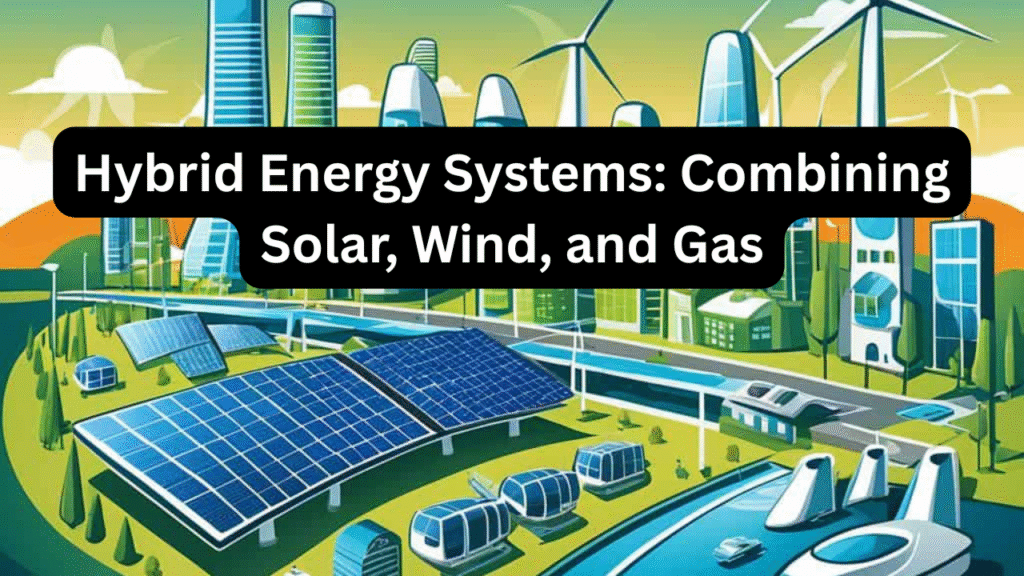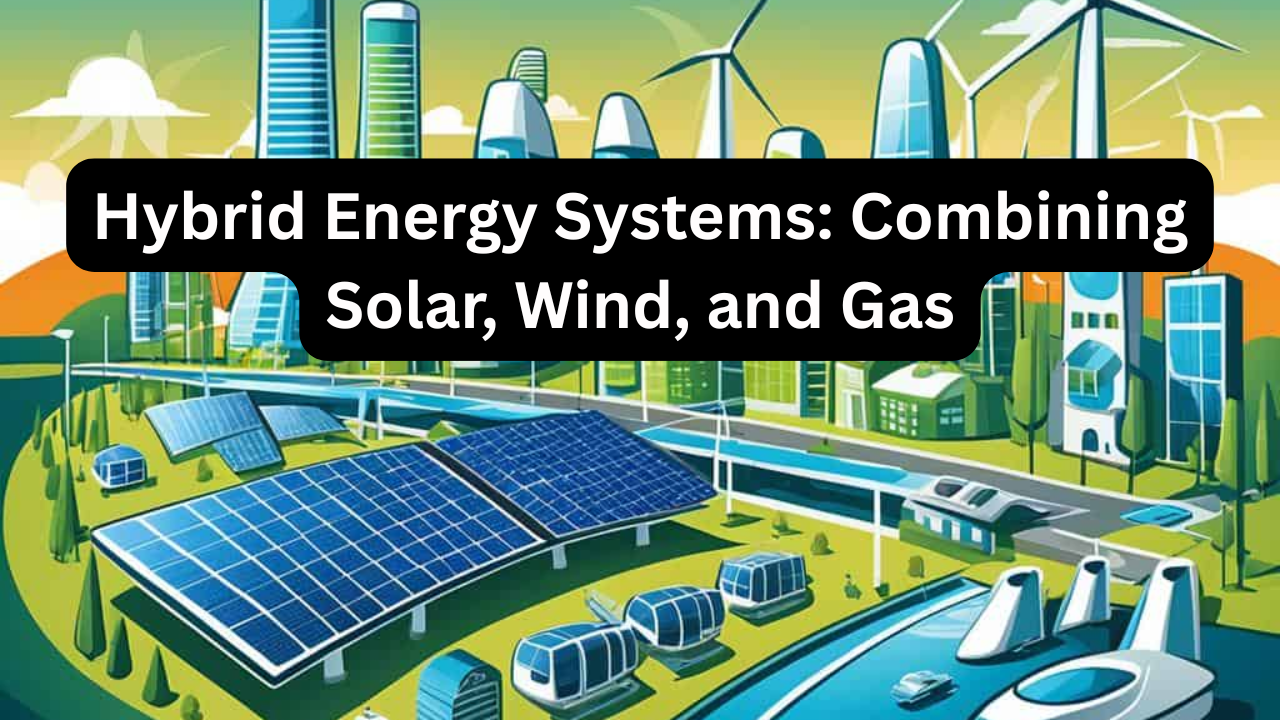
As energy costs rise and environmental concerns grow, homeowners are increasingly seeking more sustainable, reliable, and cost-effective power solutions. One emerging approach is the hybrid energy system, which combines multiple energy sources—such as solar panels, wind turbines, and gas-powered generators—to deliver consistent electricity. This integration allows households to enjoy the benefits of renewable energy while maintaining a dependable backup for times when sun or wind is scarce.
What Is a Hybrid Energy System?
A hybrid energy system blends two or more power generation methods into a single, interconnected setup. In the case of solar, wind, and gas, the system works by:
- Primary Sources – Solar & Wind: Solar panels and wind turbines generate clean electricity whenever sunlight or wind is available.
- Backup Source – Gas Generator: When renewable sources can’t meet demand, a gas generator kicks in to provide supplemental or emergency power.
- Energy Storage – Batteries: Excess energy from solar or wind is stored in batteries for later use, reducing reliance on the gas generator.
Benefits of Combining Solar, Wind, and Gas
Using a multi-source approach offers several important advantages:
- Year-Round Reliability – Solar works best in sunny weather, wind is stronger in some seasons, and gas fills in the gaps.
- Lower Energy Bills – Reduced dependence on the grid cuts monthly costs.
- Energy Independence – Less affected by utility outages or fuel price spikes.
- Sustainability – Lower carbon footprint by maximizing renewable use.
- Flexibility – Works in varied climates and geographical conditions.
Potential Challenges
While effective, hybrid systems have considerations to keep in mind:
- Upfront Cost – Installing multiple power systems can be expensive.
- Space Requirements – Need room for panels, turbines, and a generator.
- Maintenance Needs – Gas generators require regular servicing.
- Complex Setup – Requires professional installation and integration.
Cost & Savings Breakdown
Combining solar, wind, and gas can be more cost-effective over time, especially in areas with fluctuating weather.
Table: Average Costs and Savings of a Hybrid Energy System
| Component | Average Cost (Installed) | Lifespan | Annual Savings |
|---|---|---|---|
| 5 kW Solar Array | $12,000–$15,000 | 25–30 years | $700–$1,200 |
| 5 kW Wind Turbine | $20,000–$25,000 | 20–25 years | $800–$1,500 |
| Gas Generator (10 kW) | $4,000–$6,000 | 10–15 years | Backup only |
| Battery Storage (10 kWh) | $8,000–$12,000 | 10–15 years | Optimizes savings |
How the Three Sources Work Together
A well-designed hybrid system ensures each energy source complements the others:
- Daytime – Solar produces the majority of electricity.
- Night or Cloudy Days – Wind turbines often pick up generation.
- Calm, Overcast Periods – Gas generator supplies backup power.
- Battery Storage – Smooths out fluctuations by storing excess and releasing it when needed.
Ideal Conditions for a Hybrid Setup
To get the best results from combining solar, wind, and gas:
- Location should receive adequate sunlight and wind throughout the year.
- Property Size should accommodate all system components safely.
- Energy Usage should justify the investment (higher usage = faster payback).
- Access to Incentives such as tax credits or rebates can reduce upfront costs.
Environmental Benefits
Hybrid systems significantly reduce greenhouse gas emissions by relying on solar and wind for most of the power. Gas generators are used sparingly, further lowering overall environmental impact while ensuring energy security.
Overview Table
| Feature | Description | Benefit to Homeowner |
|---|---|---|
| Multi-Source Power | Solar + Wind + Gas combined | Year-round reliability |
| Renewable Priority | Solar and wind as primary sources | Lower carbon footprint |
| Backup Reliability | Gas generator for emergencies | Uninterrupted power supply |
| Cost Savings | Reduced reliance on grid power | Lower monthly bills |
| Energy Storage | Batteries store excess for later use | Increased efficiency |
| Flexibility | Works in varied weather conditions | Maximum adaptability |
Conclusion
A hybrid energy system combining solar, wind, and gas offers the perfect balance of sustainability, reliability, and flexibility. While the initial investment is higher than single-source systems, the long-term benefits—such as lower bills, reduced emissions, and greater energy independence—make it an attractive option for homeowners in diverse climates. For those looking to future-proof their energy supply, hybrid systems could be the smartest choice.
3 Quick FAQs
- Is a hybrid energy system worth the cost?
Yes, in areas with variable weather, the reliability and savings can outweigh the higher upfront investment. - Can I run a hybrid system without a battery?
Yes, but batteries improve efficiency by storing excess renewable energy. - How often will the gas generator run?
Only when solar and wind cannot meet demand, making fuel use minimal.

